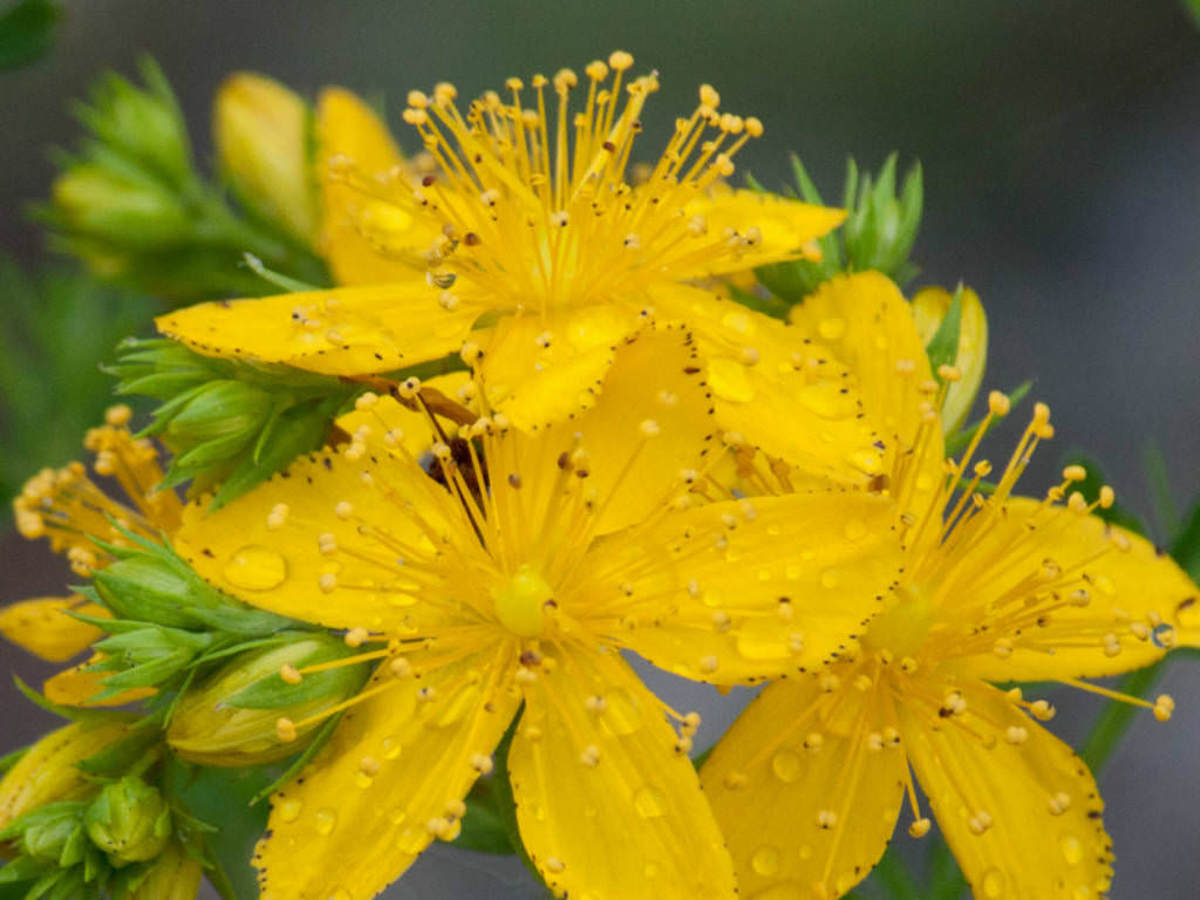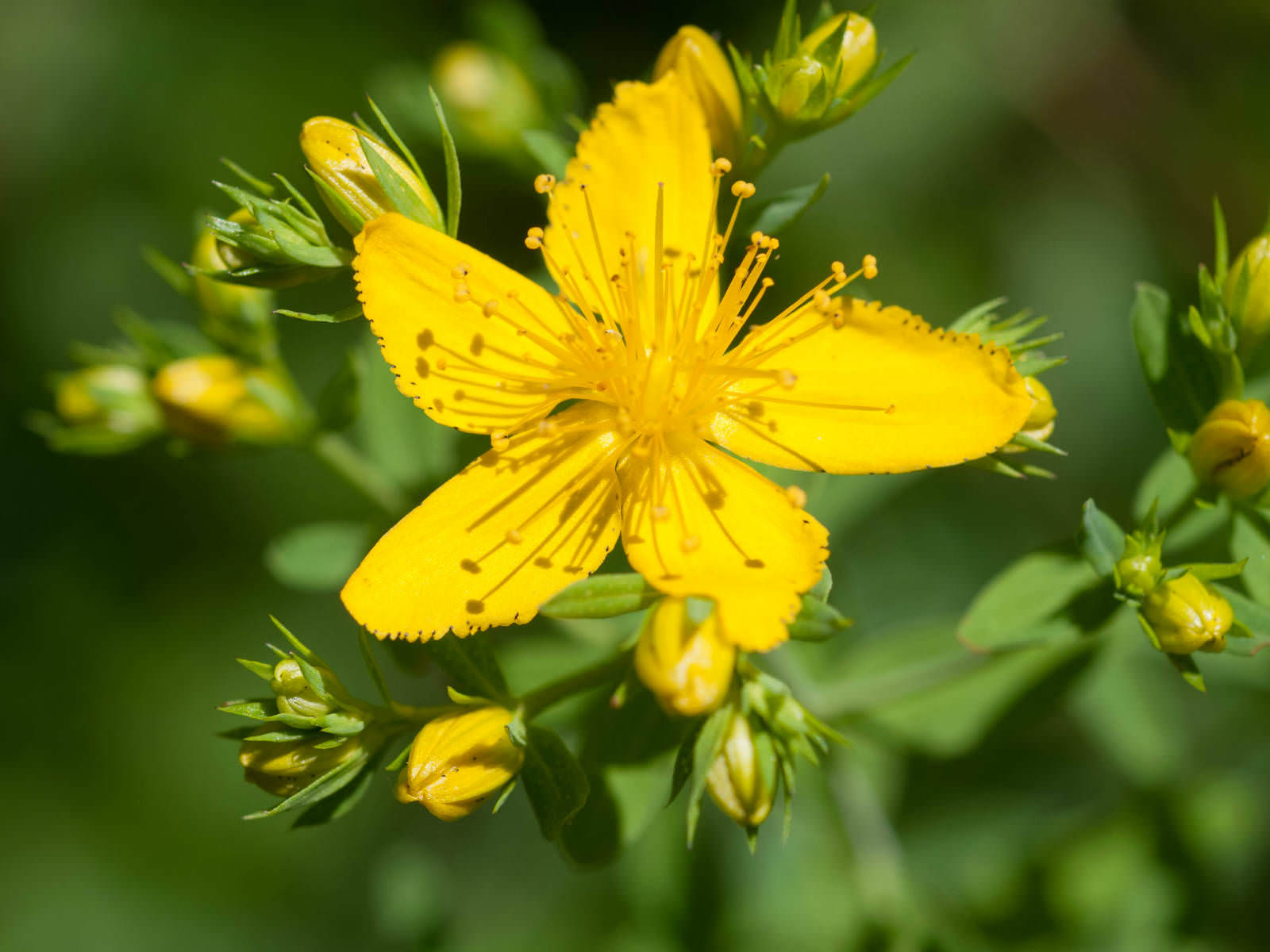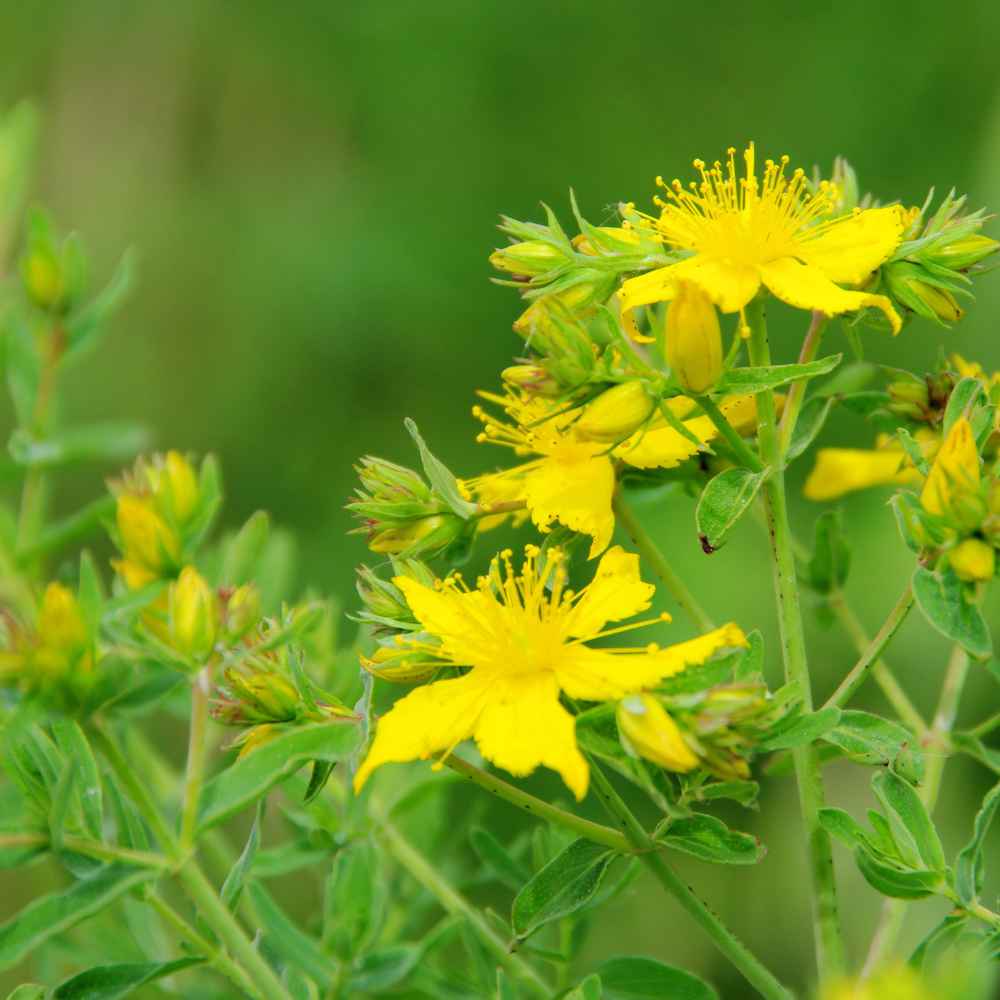Understanding the Needs of St John’s Wort
St John’s Wort (Hypericum perforatum) is a perennial herb native to Europe, Western Asia, and North Africa. To optimize its growth and medicinal properties, it’s essential to provide the right growing conditions. When considering where to plant St John’s Wort, it’s crucial to understand its requirements for sunlight, soil, and moisture.
St John’s Wort thrives in full sun to partial shade, making it an ideal plant for meadows, woodland edges, or gardens with plenty of sunlight. However, it’s essential to note that excessive shade can lead to weak and leggy growth, reducing the plant’s medicinal properties. When deciding where to plant St John’s Wort, choose a location that receives at least 4-6 hours of direct sunlight per day.
In terms of soil requirements, St John’s Wort prefers well-draining soil with a slightly acidic pH (between 6.0 and 7.0). Avoid planting in areas with standing water or where water tends to collect, as this can lead to root rot and other problems. If your soil is heavy clay or sandy, consider amending it with organic matter like compost or well-rotted manure to improve its structure and fertility.
Moisture is also a critical factor in St John’s Wort growth. While the plant is relatively drought-tolerant, it performs best in areas with consistent moisture. Aim to provide about 1-2 inches of water per week, either through rainfall or irrigation. Avoid overwatering, as this can lead to root rot and other issues.
By understanding the needs of St John’s Wort, you can create an ideal growing environment that promotes healthy growth and maximizes its medicinal properties. Whether you’re planting in a garden, meadow, or container, providing the right conditions is essential for optimal growth and success.
How to Select the Ideal Spot for Your St John’s Wort Plant
When deciding where to plant St John’s Wort, it’s essential to consider the climate, soil type, and surrounding vegetation. St John’s Wort is a hardy plant that can thrive in a variety of conditions, but it prefers well-draining soil and full sun to partial shade. If you’re looking to plant St John’s Wort in a garden or meadow, choose a location that receives at least 4-6 hours of direct sunlight per day.
In terms of climate, St John’s Wort is relatively adaptable and can tolerate a range of temperatures. However, it prefers cooler temperatures and can be sensitive to extreme heat. If you live in a hot and dry climate, consider planting St John’s Wort in a location that provides some shade, such as a woodland edge or a north-facing slope.
Soil type is also an important consideration when deciding where to plant St John’s Wort. The plant prefers well-draining soil with a slightly acidic pH (between 6.0 and 7.0). Avoid planting in areas with standing water or where water tends to collect, as this can lead to root rot and other problems. If your soil is heavy clay or sandy, consider amending it with organic matter like compost or well-rotted manure to improve its structure and fertility.
Surrounding vegetation is also an important factor to consider when deciding where to plant St John’s Wort. The plant can be invasive in some areas, so it’s essential to choose a location where it won’t outcompete other plants. Consider planting St John’s Wort in a location with other plants that have similar growing conditions, such as coneflowers or black-eyed susans.
Some ideal locations for planting St John’s Wort include meadows, woodland edges, and gardens with well-draining soil and full sun to partial shade. Avoid planting in areas with standing water or where water tends to collect, as this can lead to root rot and other problems. By choosing the right location for your St John’s Wort plant, you can help it thrive and maximize its medicinal properties.
The Benefits of Planting St John’s Wort in a Sunny Location
When deciding where to plant St John’s Wort, sunlight is a crucial factor to consider. St John’s Wort requires full sun to partial shade to thrive, and the amount of sunlight it receives can impact its growth, flowering, and medicinal properties. In general, St John’s Wort prefers at least 4-6 hours of direct sunlight per day, although it can tolerate some shade.
Planting St John’s Wort in a sunny location can have several benefits. For one, it can promote healthy growth and development, leading to a more robust and vigorous plant. Sunlight also triggers the production of hypericin, the active compound responsible for St John’s Wort’s medicinal properties. In fact, studies have shown that St John’s Wort plants grown in full sun produce higher levels of hypericin than those grown in shade.
In addition to promoting healthy growth and medicinal properties, sunlight can also impact the flowering of St John’s Wort. The plant produces small, yellow flowers in the summer months, which are rich in nectar and attract pollinators. Planting St John’s Wort in a sunny location can encourage more prolific flowering, which can be beneficial for both the plant and the surrounding ecosystem.
While St John’s Wort can tolerate some shade, it’s generally best to avoid planting it in areas with dense tree cover or other obstructions that block sunlight. If you’re looking to plant St John’s Wort in a woodland garden or other shaded area, consider thinning out the canopy or pruning nearby plants to allow more sunlight to reach the St John’s Wort.
Ultimately, the key to growing healthy and medicinal St John’s Wort is to provide it with the right amount of sunlight. By planting it in a sunny location and ensuring it receives at least 4-6 hours of direct sunlight per day, you can promote healthy growth, flowering, and medicinal properties.
Soil Requirements for St John’s Wort: A Guide to Choosing the Right Soil Type
When deciding where to plant St John’s Wort, soil type is a crucial factor to consider. St John’s Wort requires well-draining soil with a slightly acidic pH to thrive. In this section, we’ll explore the soil requirements for St John’s Wort and provide tips on how to amend soil to create an ideal growing environment.
St John’s Wort prefers soil with a pH between 6.0 and 7.0, which is slightly acidic to neutral. Soil with a pH outside of this range can impact the plant’s growth and medicinal properties. If your soil is too alkaline, you can add elemental sulfur or peat moss to lower the pH. If your soil is too acidic, you can add lime to raise the pH.
In addition to pH, St John’s Wort also requires well-draining soil to prevent root rot and other problems. Soil with good drainage allows water to penetrate the soil and reach the roots, while also preventing waterlogged soil. If your soil is heavy clay or prone to waterlogging, you can add organic matter like compost or well-rotted manure to improve its structure and drainage.
When choosing a soil type for St John’s Wort, consider a mix that is specifically designed for herbs or perennials. These mixes typically contain a blend of peat moss, vermiculite, and perlite, which provide good drainage and aeration. Avoid using regular potting soil, as it can be too dense and may not provide the right balance of nutrients.
If you’re planting St John’s Wort in a container, make sure to choose a potting mix that is specifically designed for containers. These mixes are typically lighter and more well-draining than regular potting soil, which can help prevent waterlogging and root rot.
By choosing the right soil type and amending it to create an ideal growing environment, you can help your St John’s Wort plant thrive and produce high-quality medicinal properties.
Planting St John’s Wort in Containers: A Guide to Choosing the Right Pot and Soil
Planting St John’s Wort in containers can be a great way to grow this versatile herb, especially if you have limited space or want to add some greenery to your patio or balcony. When deciding where to plant St John’s Wort in a container, it’s essential to choose the right pot and soil to ensure optimal growth and medicinal properties.
When selecting a pot for St John’s Wort, choose one that is at least 6-8 inches deep and has good drainage holes. This will allow the roots to grow deep and prevent waterlogged soil. Consider using a pot made of terracotta or ceramic, as these materials allow for good air circulation and moisture retention.
In terms of soil, St John’s Wort prefers a well-draining potting mix that is specifically designed for herbs or perennials. Avoid using regular potting soil, as it can be too dense and may not provide the right balance of nutrients. Look for a potting mix that contains a blend of peat moss, vermiculite, and perlite, which provide good drainage and aeration.
When it comes to fertilization, St John’s Wort is a relatively low-maintenance plant that doesn’t require a lot of fertilizer. However, feeding it with a balanced fertilizer once a month can promote healthy growth and medicinal properties. Avoid using high-nitrogen fertilizers, as they can promote leaf growth at the expense of root development.
Some benefits of container gardening for St John’s Wort include the ability to control the soil quality and moisture levels, as well as the flexibility to move the plant to different locations to optimize growth. Additionally, container gardening can help prevent the spread of invasive roots and reduce the risk of pests and diseases.
By following these tips and choosing the right pot and soil for your St John’s Wort plant, you can enjoy the many benefits of this versatile herb and optimize its growth and medicinal properties.
Common Mistakes to Avoid When Planting St John’s Wort
When planting St John’s Wort, it’s essential to avoid common mistakes that can impact the plant’s growth and medicinal properties. By being aware of these mistakes, you can ensure that your St John’s Wort plant thrives and provides the benefits you’re looking for.
One common mistake to avoid is planting St John’s Wort in areas with standing water. St John’s Wort prefers well-draining soil and can be susceptible to root rot if the soil is too wet. Make sure to choose a location with good drainage and avoid planting in low-lying areas where water may collect.
Another mistake to avoid is using too much fertilizer. St John’s Wort is a relatively low-maintenance plant that doesn’t require a lot of fertilizer. In fact, over-fertilization can lead to weak and leggy growth, which can reduce the plant’s medicinal properties. Stick to a balanced fertilizer and follow the instructions on the label.
Neglecting to prune the plant is another common mistake to avoid. Pruning St John’s Wort regularly can help promote healthy growth, encourage bushy growth, and increase the plant’s medicinal properties. Remove any dead or damaged leaves or stems, and cut back the plant to about one-third of its height after it finishes flowering.
Planting St John’s Wort in areas with poor air circulation is also a mistake to avoid. St John’s Wort prefers good air circulation to prevent fungal diseases and promote healthy growth. Make sure to choose a location with good air circulation and avoid planting in areas with dense vegetation or other obstructions.
Finally, planting St John’s Wort in areas with extreme temperatures is a mistake to avoid. St John’s Wort prefers temperatures between 65-75°F (18-24°C) and can be susceptible to damage from extreme temperatures. Make sure to choose a location with moderate temperatures and avoid planting in areas with frequent frosts or heatwaves.
By avoiding these common mistakes, you can help ensure that your St John’s Wort plant thrives and provides the benefits you’re looking for. Remember to choose a location with good drainage, use balanced fertilizer, prune the plant regularly, provide good air circulation, and avoid extreme temperatures.
St John’s Wort Companion Planting: What Plants to Plant Together
Companion planting is a technique used to enhance the growth, flavor, and medicinal properties of plants by planting them together. St John’s Wort is a versatile herb that can be planted with a variety of other plants to create a harmonious and beneficial garden. In this section, we’ll explore some of the best plants to plant together with St John’s Wort.
One of the best plants to plant with St John’s Wort is lavender. Lavender and St John’s Wort have similar growing conditions and can benefit from each other’s growth. Lavender can help repel pests that might be attracted to St John’s Wort, while St John’s Wort can provide a natural fertilizer for lavender.
Another plant that pairs well with St John’s Wort is chamomile. Chamomile and St John’s Wort have a calming effect on each other and can create a soothing and peaceful garden atmosphere. Chamomile can also help to repel pests and improve the flavor of St John’s Wort.
Marjoram is another herb that can be planted with St John’s Wort. Marjoram and St John’s Wort have similar growing conditions and can benefit from each other’s growth. Marjoram can help to improve the flavor of St John’s Wort, while St John’s Wort can provide a natural fertilizer for marjoram.
When planting St John’s Wort with other plants, it’s essential to consider their growing conditions and space requirements. Make sure to choose plants that have similar growing conditions and space requirements to ensure a harmonious and beneficial garden.
By planting St John’s Wort with other plants, you can create a diverse and thriving garden that provides a variety of benefits. Whether you’re looking to enhance the growth, flavor, or medicinal properties of your plants, companion planting is a technique that can help you achieve your goals.
Conclusion: Finding the Perfect Spot for Your St John’s Wort Plant
Choosing the right location for your St John’s Wort plant is crucial for its growth and medicinal properties. By considering factors such as sunlight, soil, and moisture requirements, you can create an ideal growing environment that promotes healthy growth and maximizes the plant’s benefits.
Remember to avoid common mistakes such as planting in areas with standing water, using too much fertilizer, and neglecting to prune the plant. Instead, focus on providing your St John’s Wort plant with the right conditions to thrive.
Experimenting with different locations and growing conditions can help you find the perfect spot for your St John’s Wort plant. Consider companion planting with other herbs or flowers to enhance growth, flavor, and medicinal properties.
By following the tips and guidelines outlined in this article, you can optimize the growth of your St John’s Wort plant and enjoy its many benefits. Whether you’re looking to use St John’s Wort for medicinal purposes or simply want to add a beautiful and fragrant herb to your garden, choosing the right location is key to success.
So, where to plant St John’s Wort? The answer is simple: choose a location that provides the right conditions for growth and development, and don’t be afraid to experiment and try new things. With a little patience and care, you can enjoy the many benefits of St John’s Wort and create a thriving and beautiful garden.


:max_bytes(150000):strip_icc()/GettyImages-130887026-b0c98341ea7744b48d95ffb599a37d9f.jpg)





